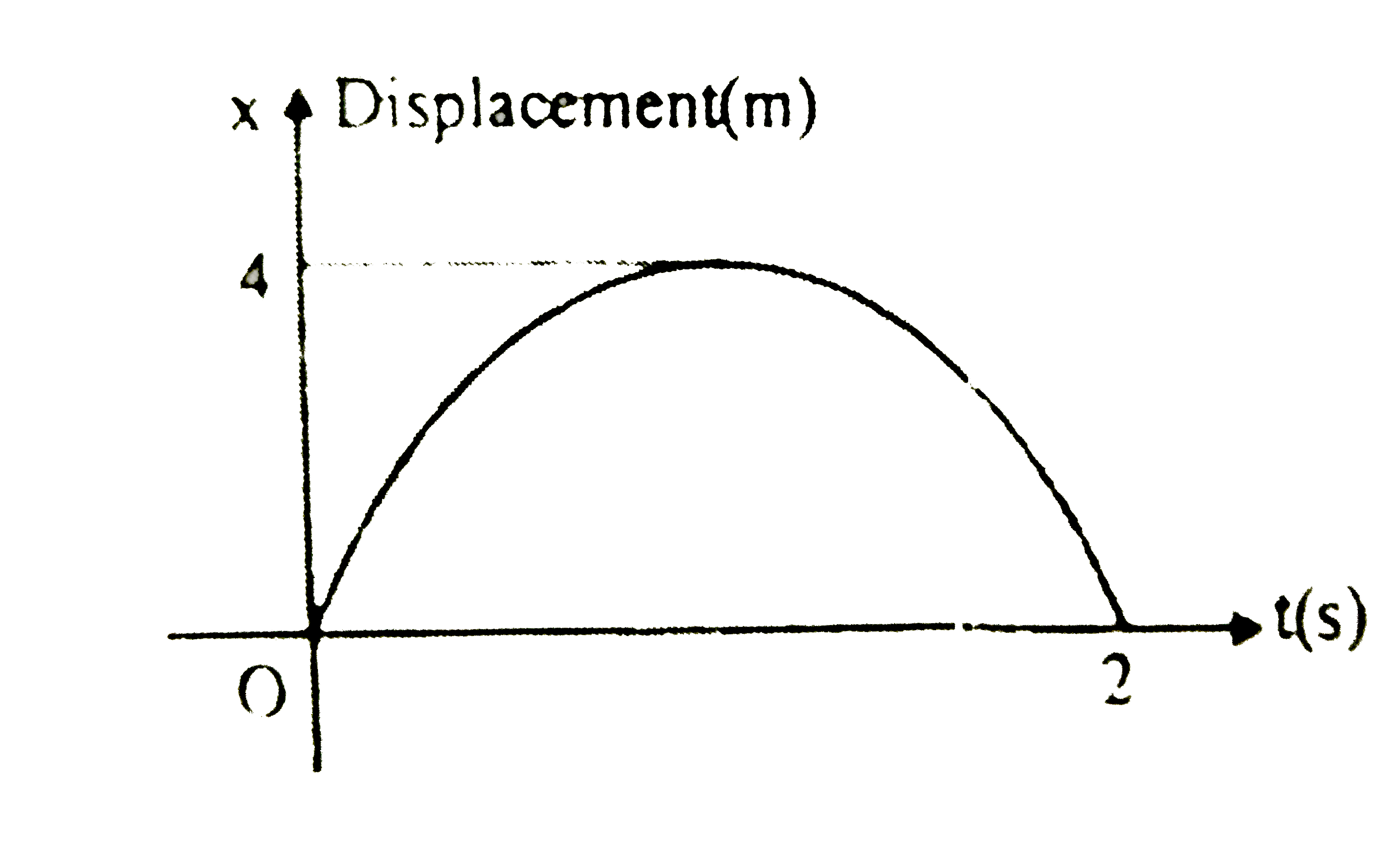The slope of kinetic energy displacement curve of a particle in motion is
Equal to the acceleration of the particle
Inversely proportional to the acceleration
Directly proportional to the acceleration
None of the above
The correct Answer is:C
E=12mv2. Differentiating w.r.t. x , we get
dEdx=12m×2vdvdx=mv×dvdt×dtdx=mv×av=ma
Topper's Solved these Questions
- WORK , ENERGY , POWER AND COLLISIONBook:ERRORLESS Chapter:WORK , ENERGY , POWER AND COLLISIONExercise:Assertion & Reason For AIIMS Aspirants
Explore 30 Videos
- WAVES AND SOUNDBook:ERRORLESS Chapter:WAVES AND SOUNDExercise:SET
Explore 25 Videos
- WORK, ENERGY, POWER & COLLISIONBook:ERRORLESS Chapter:WORK, ENERGY, POWER & COLLISIONExercise:Assertion
Explore 30 Videos
Similar Questions
Figure shows a sine curve, as the displacement time curve of a particle executing rectilinear motion having equation x=45(π2t). The velocit of particle at t=23s is

View SolutionThe kinetic energy and potential energy of a particle executing simple harmonic motion will be equal, when displacement (amplitude =a) is
View Solution
Knowledge Check
The graph between kinetic energy and displacement of a particle performing S.H.M. is
AparabolaBstraight lineCellipseDcircleA particle performs verticle circular motion along the circular path . If the ratio of kinetic energy to potential energy of a particle at any position is (If the particle makes an angle θ wityh vertical at the position .)
A3+2cosθ1−cosθB12(3+2cosθ)(1−cosθ)C1−cosθ3+2cosθD1+cosθ3−2cosθA body executing SHM has a total energy E. When its kinetic energy is 3E/4, the displacement of the particle is (A is amplitude)
AABA/2C√3A2D3A4
A particle moves in a straight line with retardation proportional to its displacement. Its loss of kinetic energy for any displacement x is proportional to
View SolutionA particle moves in a straight line with retardation proportional to its displacement. Its loss of kinetic energy for any displacement x is proportional to
View SolutionA particle moves in a straight line with retardation proportional to its displacement. Its loss in kinetic energy for any displacement x is proportional to
View SolutionWhen the displacement of a particle executing simple harmonic motion is half its amplitude, the ratio of its kinetic energy to potential energy is
View SolutionThe kinetic energy and the potential energy of a particle executing SHM are equal The ratio of its displacement and amplitude will be
View Solution